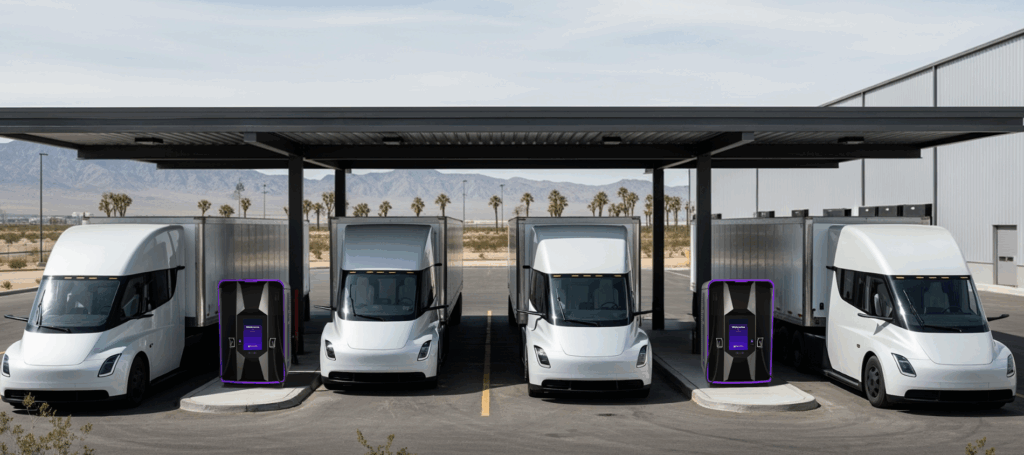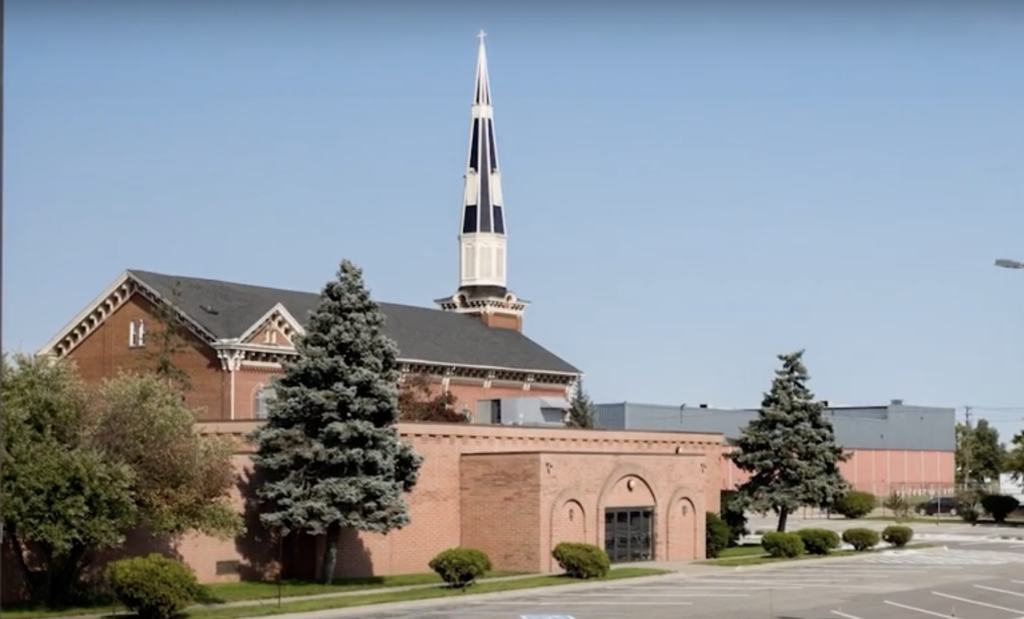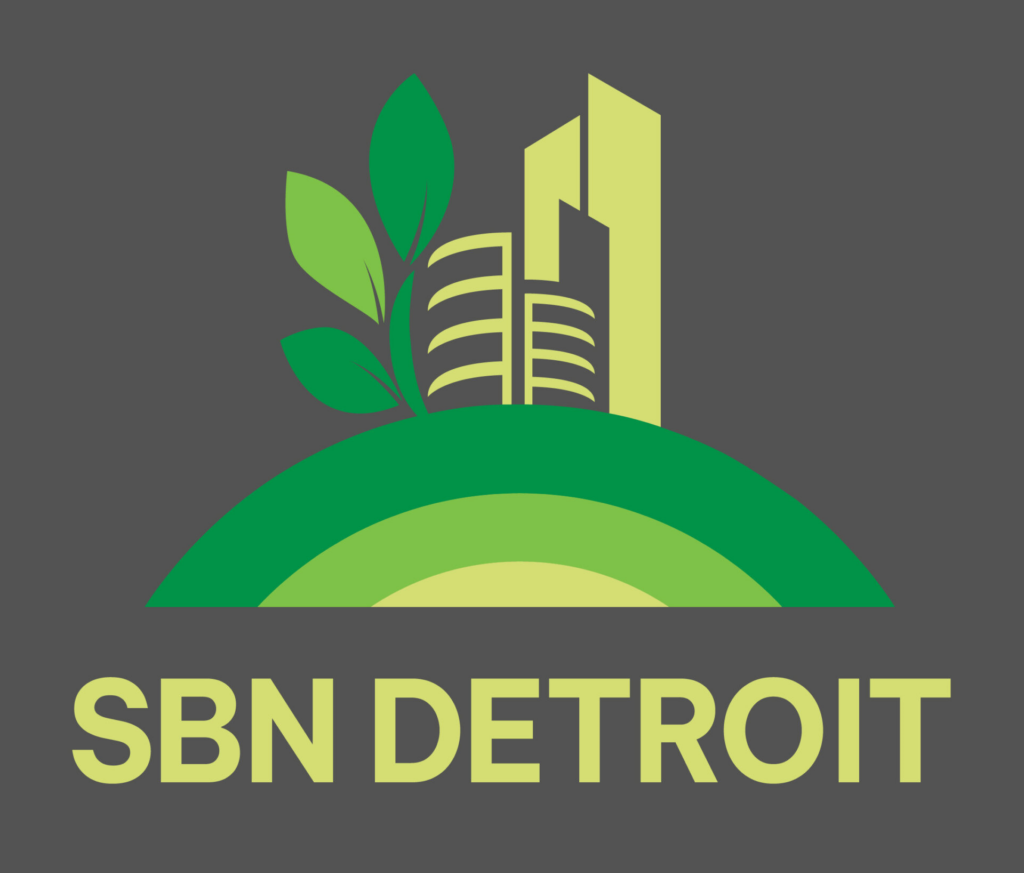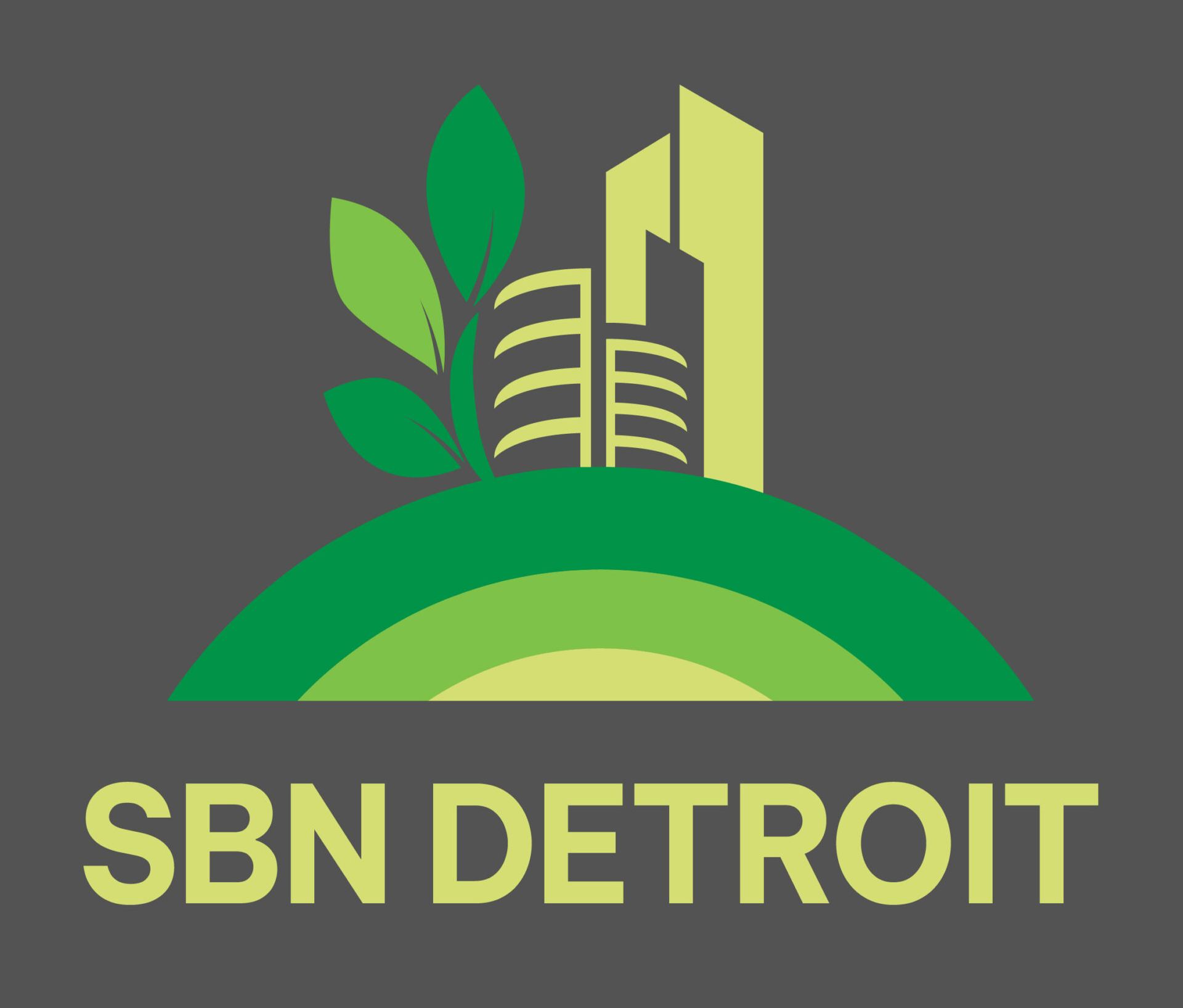Electrifying Eastern Market

Detroit’s Eastern Market is working to become a national model for integrating freight solutions that reduce fossil fuel use and freight operation costs. San Carlos, Calif.-based ElectricFish, a finalist in the Toyota Mobility Foundation’s Sustainable Cities Challenge, was chosen to build battery-integrated fast chargers to power EVs and provide backup energy for Eastern Market. As one of only three cities worldwide chosen for this challenge, Detroit is using the opportunity to position itself as a leader in transportation innovation, this time in clean mobility. SBN Detroit interviewed ElectricFish co-founder Anurag Kamal about why Eastern Market is the ideal proving ground, what this means for the city’s EV landscape, and how this project could influence urban electrification nationwide. Q: What does Detroit’s selection as a Toyota Mobility Foundation Sustainable Cities Challenge finalist mean for its position in EV and clean mobility? A: Being one of just three cities in the world chosen for this program is an achievement in itself. Detroit has always been a center of automotive innovation, and now we’re seeing a new evolution – from internal combustion to electric. The challenges are complex, especially for medium- and heavy-duty freight vehicles, where electrification requires both cost-effective solutions and robust infrastructure. This project is a way to demonstrate what’s possible and draw attention to Detroit’s potential in leading the shift to sustainable transport. Q: What advantages or challenges does Detroit present for innovating in EV infrastructure? A: Detroit’s biggest advantage is its proximity to the automakers and decision-makers. For startups like ours, having industry leaders see our work firsthand is invaluable. But Detroit is also a challenging test bed – the infrastructure in many areas is outdated and upgrading it can be extremely expensive. In places like Eastern Market, where we’re deploying, the cost to modernize could run into the millions. That’s why we’re proving there’s a different, more cost-effective way to build charging capability that can be replicated in other cities with similar constraints. Q: How does the Toyota Mobility Foundation competition help accelerate innovation? A: Funding is a huge part of it. Detroit secured $3 million for the first phase, with additional funding for companies that advance to later stages. Just as important is the collaboration—talking directly with local businesses, understanding their needs, and identifying unique challenges. For example, a mid-sized fishery in Eastern Market could lose thousands of dollars in product during a four- to six-hour outage caused by infrastructure upgrades. Backup energy solutions become not just a convenience, but a necessity. Q: What does success look like for this project? A: In the short term, success means mid-sized businesses in Eastern Market integrating sustainable practices, whether that’s switching to EVs or having accessible charging infrastructure on-site. For small vendors, it means being able to plug in while working in the market. On September 26, we will launch the first Public Fast Charging Hub at an event that’s open to the public. We’ll be able to demonstrate first-hand how businesses can benefit, and we are hoping to get early adoption. Long term, we want Detroit’s project to be a national case study in rapid, cost-effective urban electrification—something that inspires other cities to follow. Q: What are the biggest gaps you see today in EV charging and fleet electrification? A: Infrastructure is the number one gap. There’s a common perception that switching to electric means changing your entire workflow, parking a vehicle overnight for charging, waiting hours instead of minutes. That’s not sustainable for many businesses. The challenge is not just funding infrastructure but also developing alternative technologies and deployment models that make charging fast, flexible, and accessible. Q: As a startup, how do you decide which innovations to prioritize? A: It’s a constant balancing act. We designed a product with two very fast charging ports that can be deployed almost anywhere. But some customers question the need to pay for faster charging when they don’t see the immediate benefit. Others, like Amazon, request larger-scale systems with eight ports. The key is to stay laser-focused on our mission, move quickly, and avoid overextending into too many variations at once. Q: What lessons have you learned about scaling technology in a rapidly changing industry? A: Flexibility is everything. We’ve seen battery pack prices drop from $200,000 to $60,000 in just three and a half years. Locking into long-term agreements without room to adapt can be costly. We make sure our supply agreements account for technological changes, so we can pivot as new, more cost-effective options emerge. Q: What’s your vision for Detroit’s EV charging landscape in 10 years? A: I think we’ll see significant fleet electrification – possibly 10% adoption or more – along with widespread public and private charging. Places that sell fuel today will likely also serve EV drivers. Home charging will be common for homeowners, but public infrastructure will carry the bulk of the load. If projects like Eastern Market succeed, Detroit could be one of the most compelling examples of how urban EV infrastructure can be built quickly, effectively, and in a way that meets the needs of diverse users. Be sure to subscribe to our newsletter for regular updates on sustainable business practices in and around Detroit.
Dan Carmody, Eastern Market Partnership CEO, Talks About Building Opportunity, Economy and a Stronger Regional Food System

Dan Carmody, Eastern Market Partnership CEO since 2007, spoke with SBN Detroit on the market’s positioning towards sustainable practices. Carmody is responsible for shepherding the 127-year-old, public market to nourish a healthier, wealthier, and happier Detroit. EMP operates one of the largest public markets in the United States, oversees a program of capital investments to rebuild the market, serves as the economic development organization to nurture and expand the Eastern Market District, manages a host of food access programs to improve Detroit diets, and builds an ecosystem to support Detroit food entrepreneurs. Carmody has led Eastern Market to become a national thought leader in developing new templates for how to repurpose urban vacant land and resurrect regional food systems. We talked to Carmody about EMP’s sustainability strategies. Q: Where do EMP’S strengths lie in terms of sustainability? A: Put quite simply, we work to help build a stronger regional food system to make us less reliant on large industrial food systems. There are not enough public markets in the U.S. that serve to support independent small businesses. Public markets are the original “pop up.” Small startups and entrepreneurs can pay the fee to rent a stall or tent and get moving on their business. We need more places like that around the country to help small businesses and not be so dependent on big companies. Q: What does sustainability mean to the market? A: It means that farmers are being compensated for crops in a fashion that allows financial success. It means farmers and growers embracing business practices that help us steward the earth in better ways than we are now. How do you approach partnering with sustainable companies in the food and agriculture industries? A: Two things I can point to that we work on are first, helping to make solar options more viable, and second, helping businesses work stormwater management into their practices to reduce the cost of operation and decrease the amount of stormwater run-off into the Detroit River. Q: How does the addition of these new entities move sustainability forward in Eastern Market? A: The new Mosaic food hall will be located at 3500 Riopelle St. in the former Detroit Water Department building. This building hasn’t been occupied since 1999, so the mere act of utilizing an existing building versus tearing it down and starting over is in itself a very significant sustainable practice. EW Grobbel, who’s been selling corned beef and other foods since the 1970s, will open a new grocery store and deli, creating 300 new jobs and offering local farmers a great venue to sell. These are two great examples of growth occurring now that help move sustainability forward. Q: Looking back eight to ten years, what was your selling point then to bring businesses into the market and also to approach sustainability with them? How has that changed? A: It has not changed much. We look for partners in the food sector and others that build the market as a regional food hub and also improve the business mix for the retail consumer supply and demand. There is an authenticity to the market that has always been there and is still today. Its focus is on independent businesses and if anything, we are becoming more vocal to make sure it remains this way as property values increase. Q What partnerships do you value when it comes to sustainability? A: One that comes to mind is our partnership with The Nature Conservancy in helping businesses design and implement stormwater management systems. This has been going on for several years. We piloted a conversion of a parking lot to retain stormwater at Sacred Heart Church in the Market District that resulted in the reduction of stormwater runoff and reduced their water bills greatly. Throughout our expansion, The Conservancy is helping us as we identify future buildout plans and repurpose urban land for industrial and commercial use to build in stormwater management systems as we go. Q: What can you tell us about the new expansion of the market? A: The expansion involves 25 to 30 acres and a $1 million food processing and distribution space. Again, this will bring new jobs to the Market District, more healthy food options for people in nearby neighborhoods, and vitality and growth to the whole district. Eastern Market has one of the largest footprints of any public market in the country – and we have the space and the means to go bigger. We’ve worked over time to bring in more value-added makers, and now the market is a viable market on Saturday all year and the expansion will strengthen that. From an economic standpoint, we work to offer more opportunities to entrepreneurs to help them grow, and we will continue to do so. We’ve received funding from the state to build what we are referring to as Shed X – a new wholesale distribution facility for regional farmers. Since 1891 farmers have come to the market between midnight and 6 am to sell to independent grocers. This has shrunk over the years and we are down to about 40 million pounds per year. This is not small, but it’s also not big in terms of food distribution. We hope to grow this by building a new, modern facility with refrigeration and docks that the farmers can more efficiently use. We’ll utilize solar lighting and stormwater management within this facility. All of this will serve to help the local economy, and the diversification creates and keeps jobs in the city. Be sure to subscribe to our newsletter for regular updates on sustainable business practices in and around Detroit.


